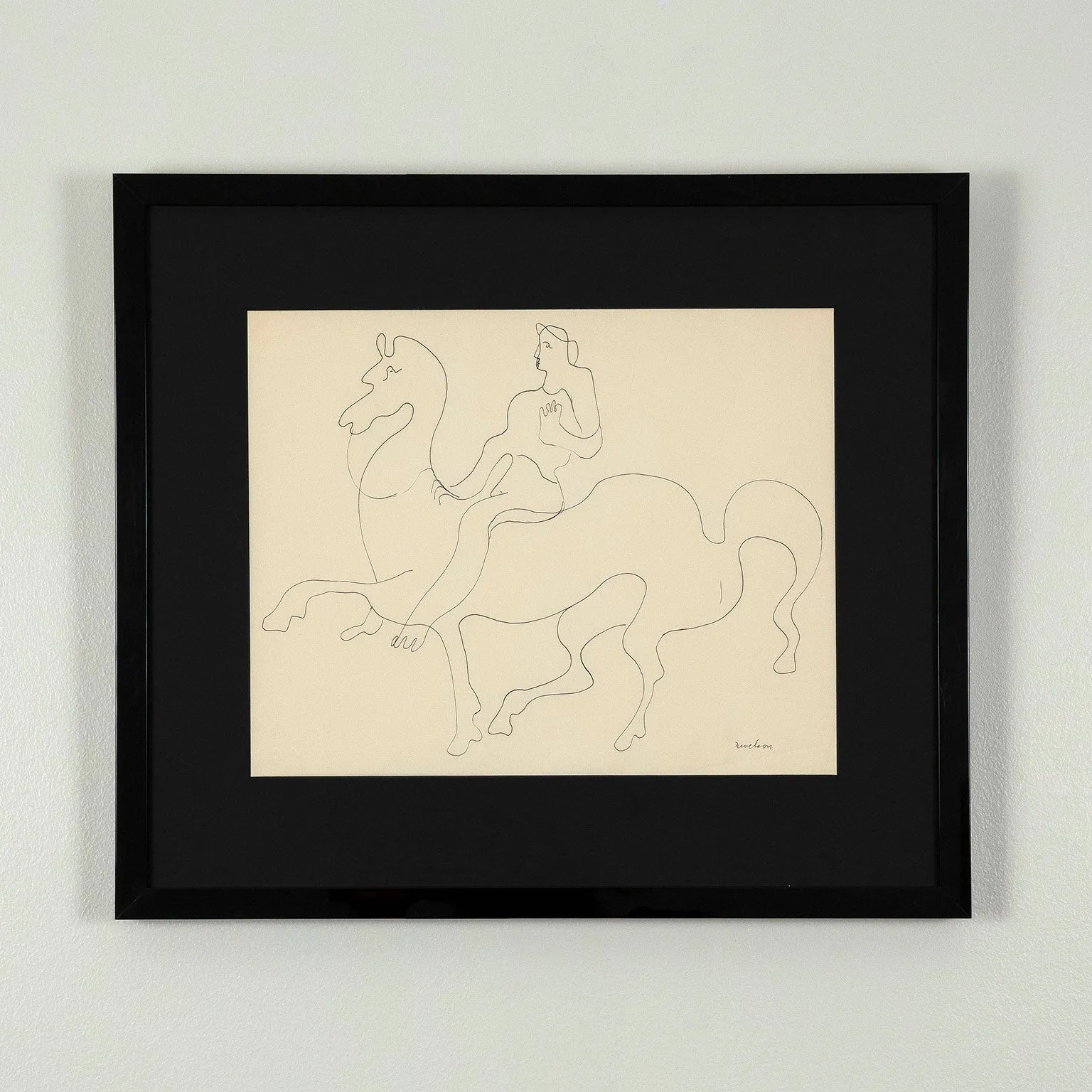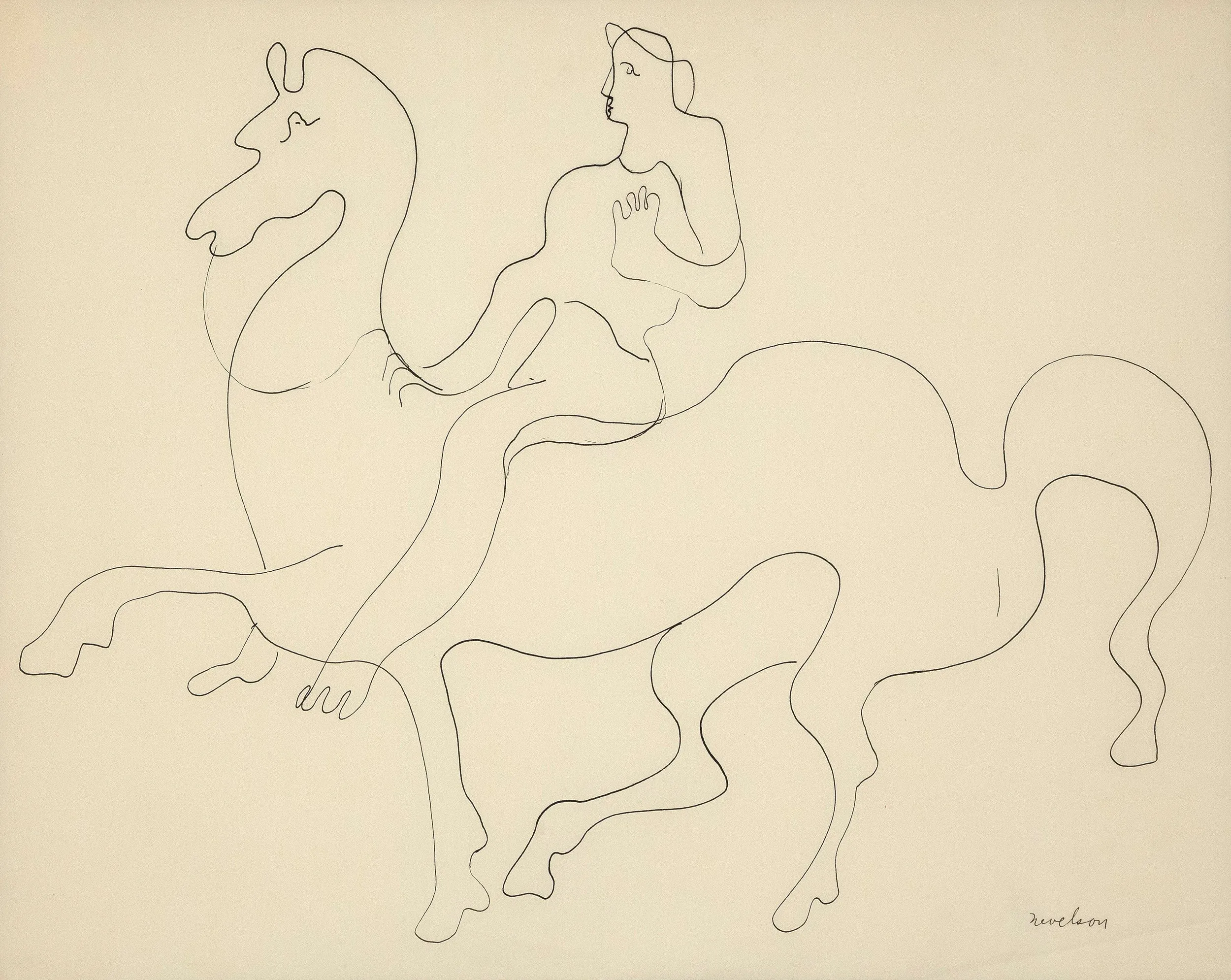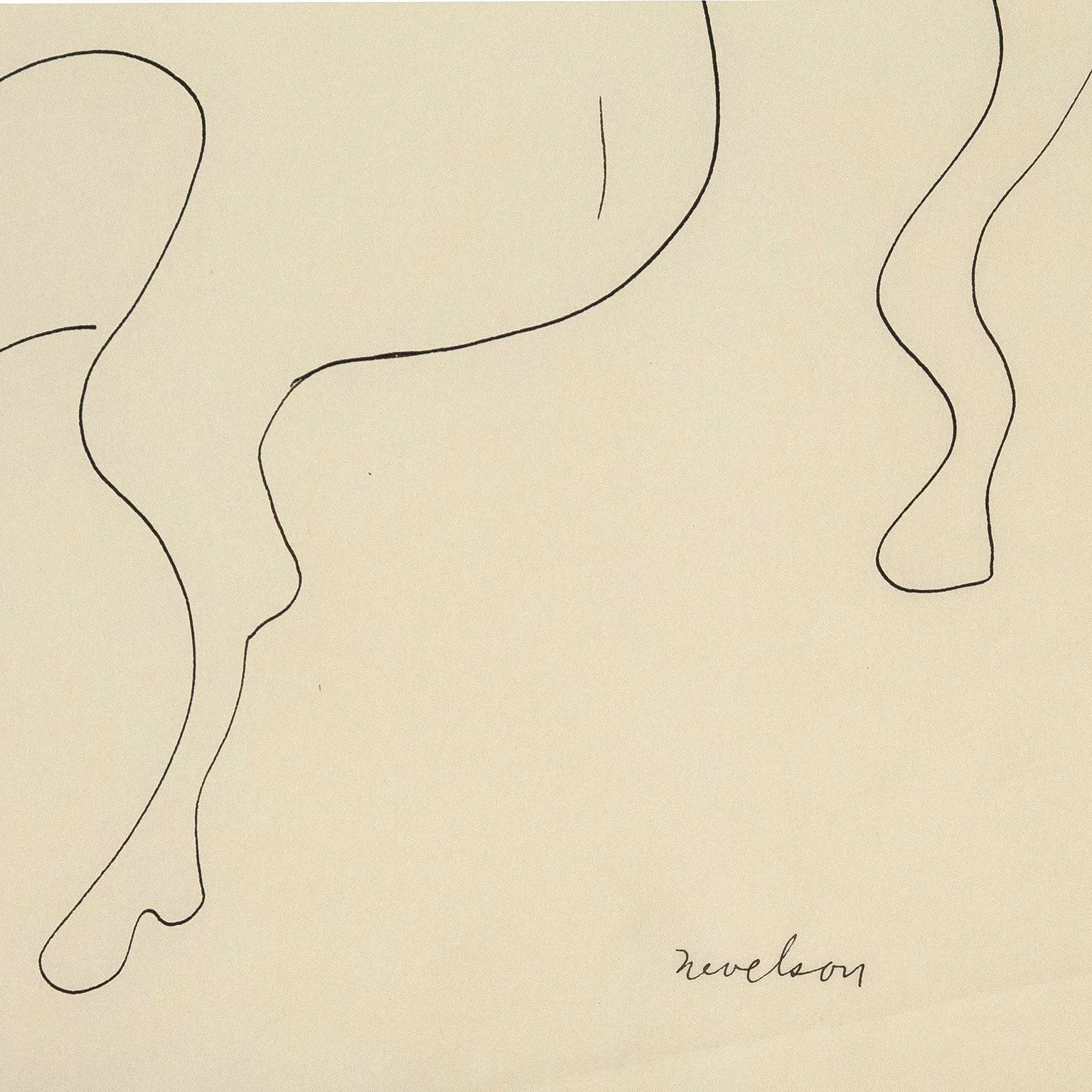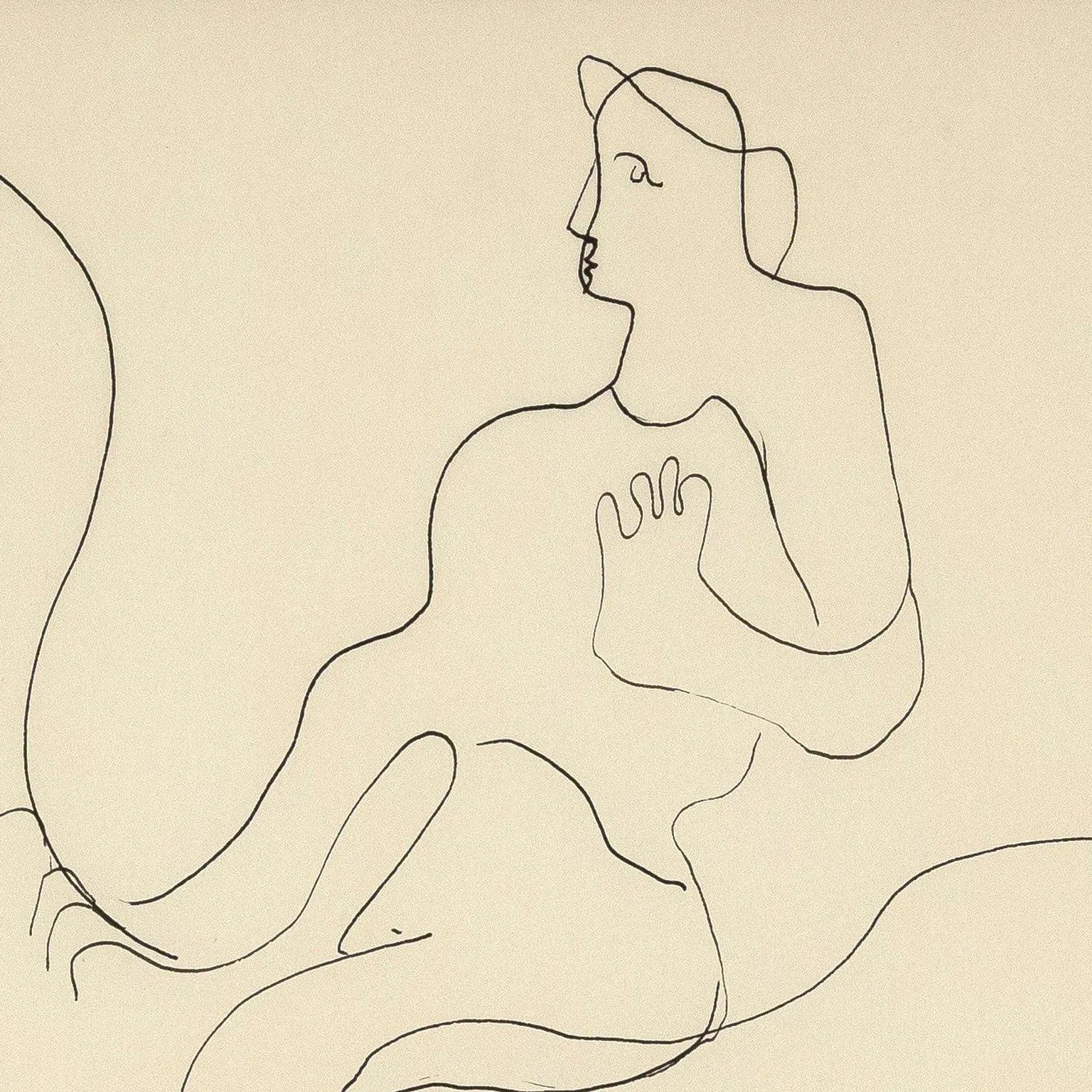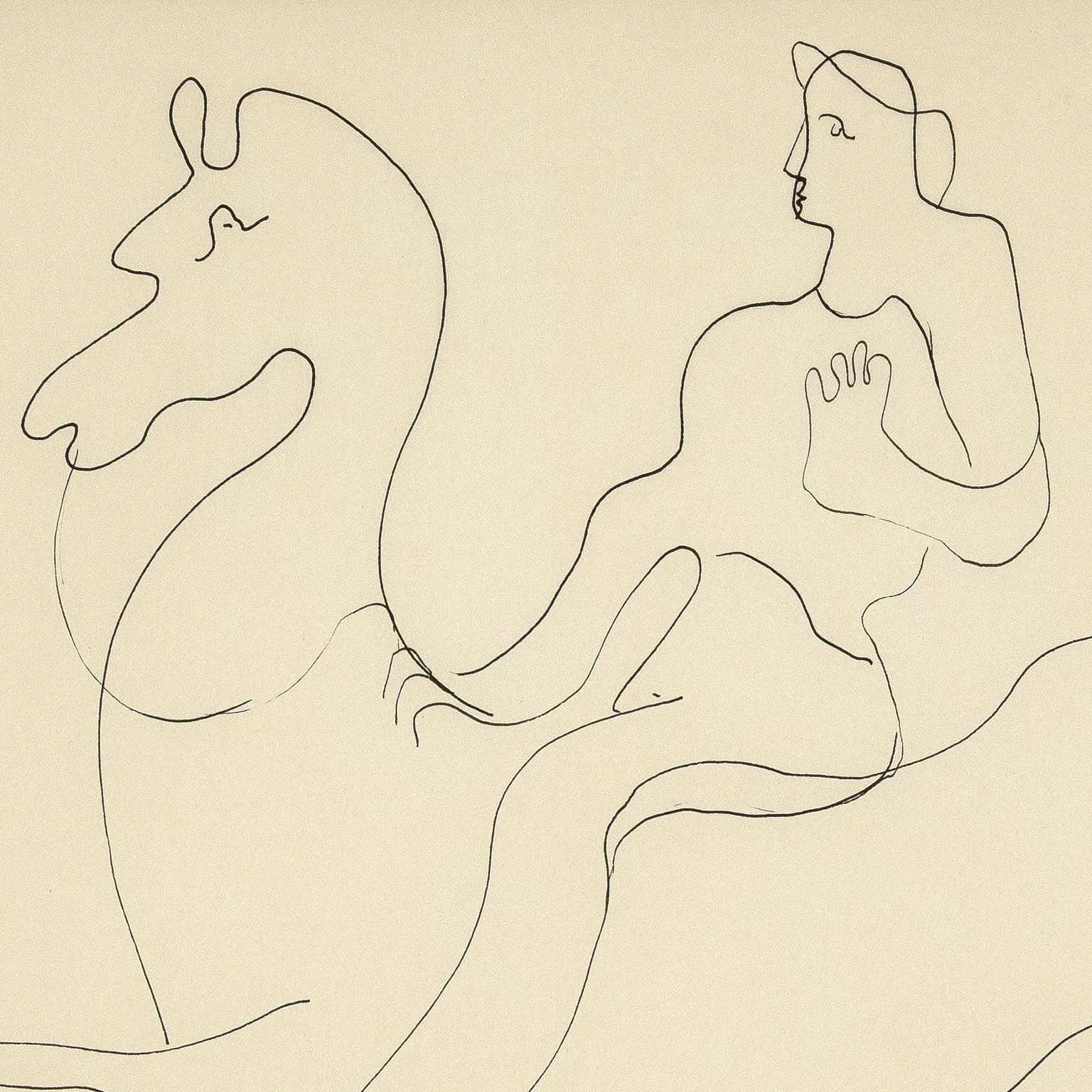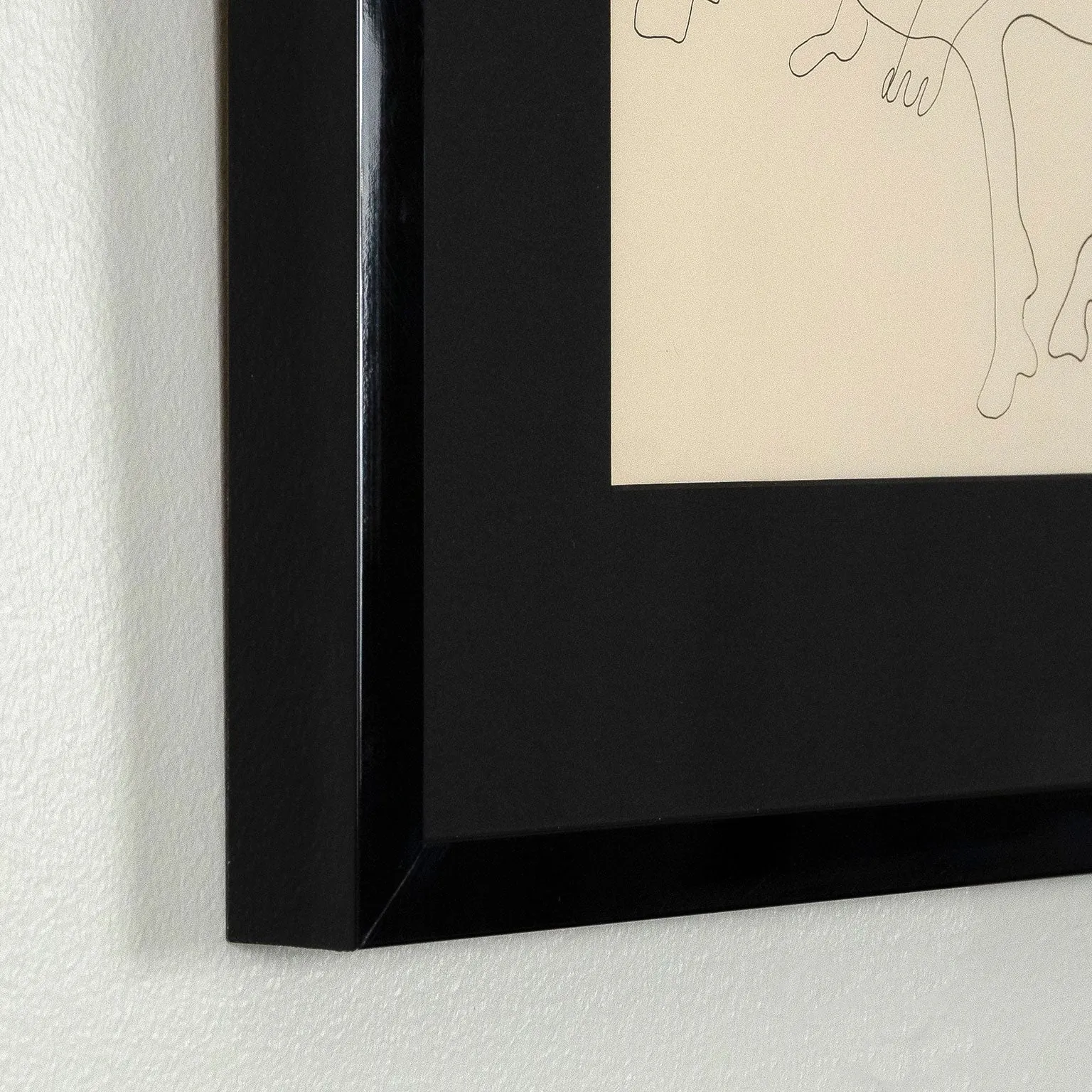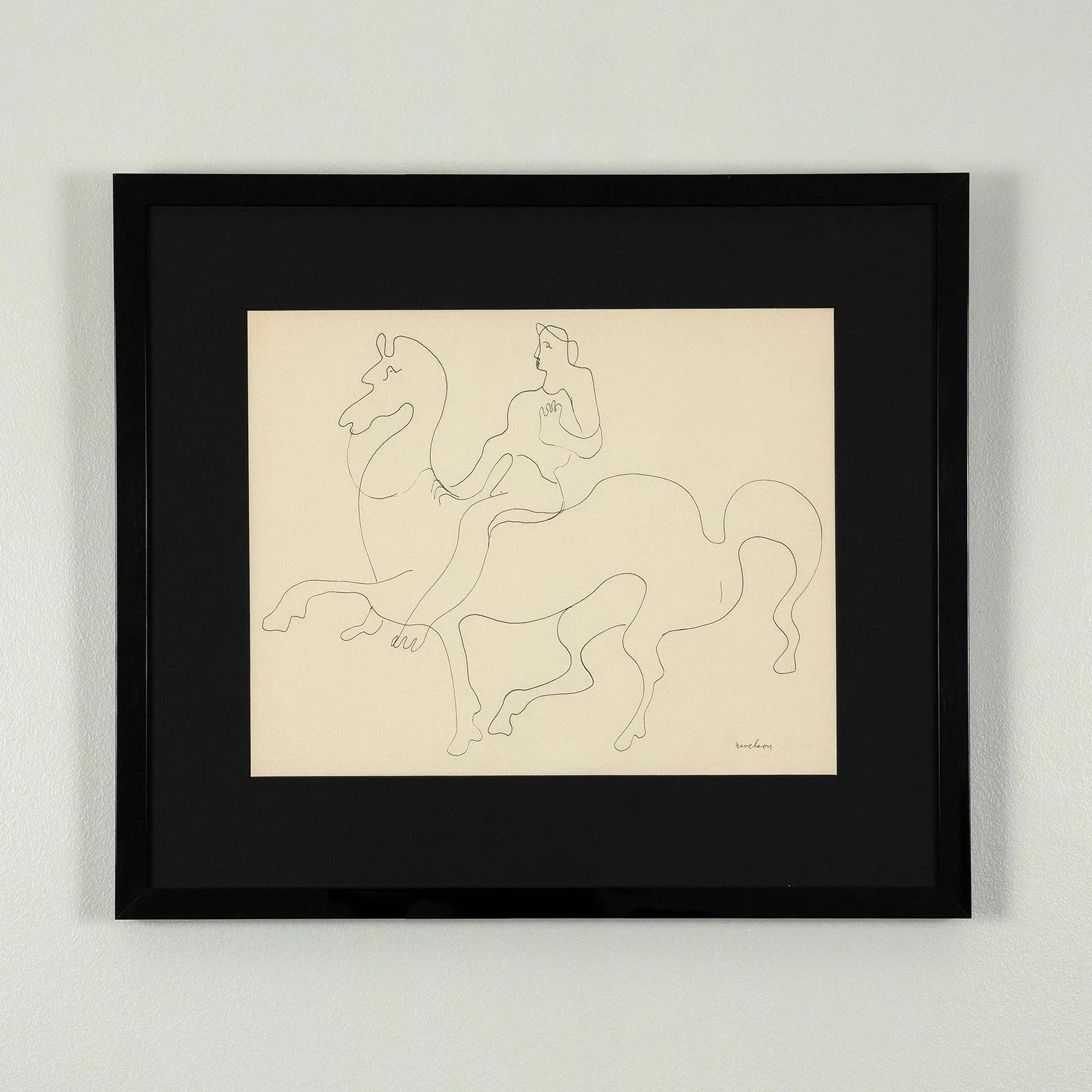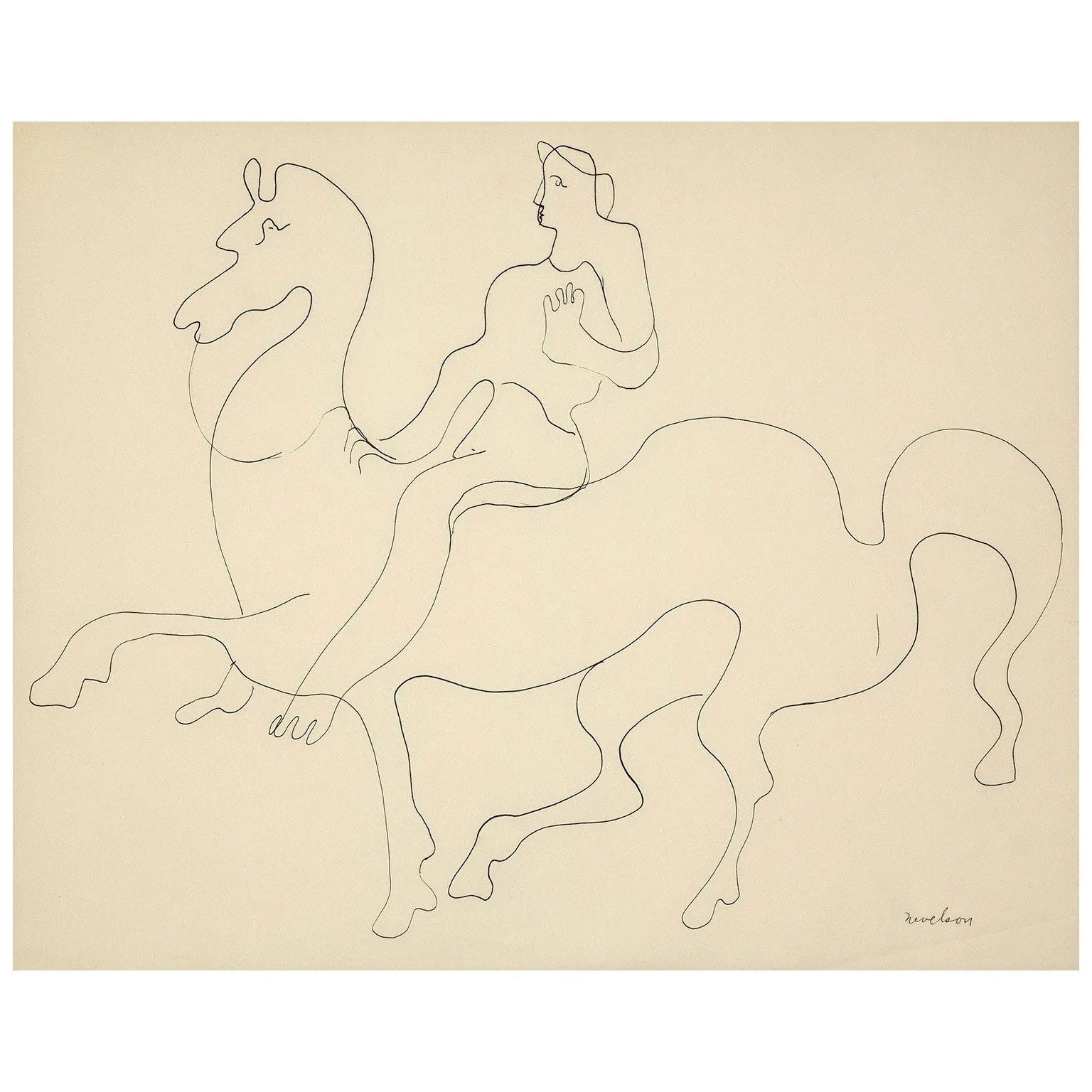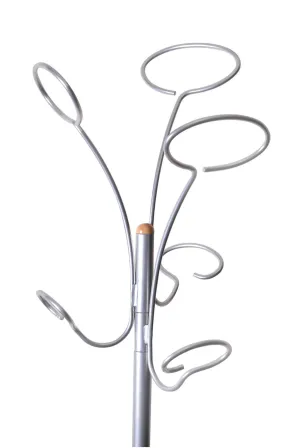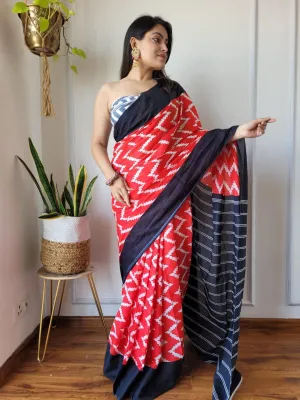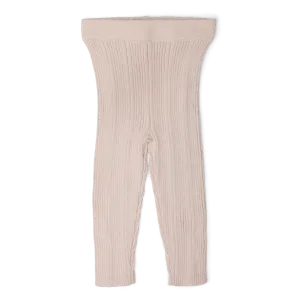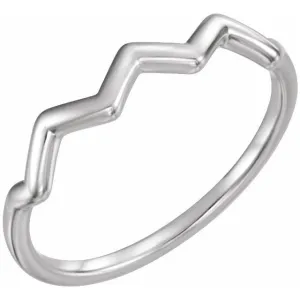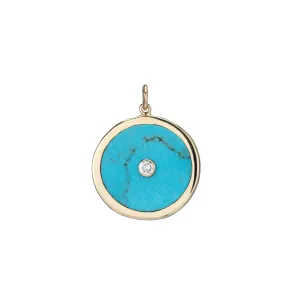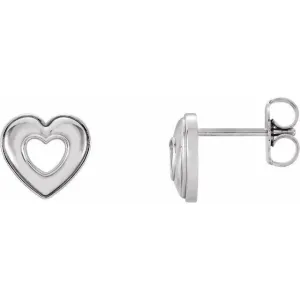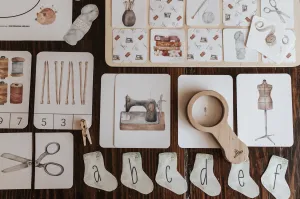Louise Nevelson (1899-1988) stands as one of the most important artists of the 20th century, recognized internationally as an influential sculptor one of the most singular artists to emerge in the era abstract expressionism. Nevelson is especially renowned for her monumental , and outdoor constructions.
A student of Hans Hofmann and Chaim Gross, she explored painting, figurative sculpture and especially drawing before focusing her lifework on sculpture.
In recent years there has been an increase in scholarship and collector interest in Nevelson's early work, as she was an early adopter of modernism in the USA. For example which explored Nevelson's prints and drawings from the first three decades of her career.
This drawing is a fine example from this era and a reminder of even when Nevelson was working in two-dimensions there was a connection to sculpture.
In this fine early drawing, lines meander around the page forming a rider and horse that recalls some of Alexander Calders early line drawings. The heroic figure on horseback is an archetype of major sculpture and can be found in public spaces across the West.
Most of Nevelson's drawing subjects were of anonymous women. This drawing is a unique anomaly as her female subject is out of the studio and riding an impressive stylized horse. We wonder whether Nevelson was depicting Lady Godiva, an 11th century English patron and noblewoman who famously rode naked on a horse. Her non-conformity, confidence and eccentricity seem like elements that would have resonated and inspired Nevelson.
Today, Nevelson's work can be found in public spaces across the United States and in major museum collections around the world.
Questions about this piece? or call 1.416.704.1720
Untitled ("Lady Godiva")
USA, circa 1930s
Signed in ink by the artist in lower right corner
Pen and ink on fine wove paper
15.25"H 12.25"W (work)
Framed
Very good condition
Provenance: This drawing was from the private collection of Louise Nevelson's friend Albert Argentieri. They lived near each other in New York City. Argentieri would photograph Nevelson and her sculptures. He also searched nearby abandoned buildings for wooden pieces to be used in her sculptures.


